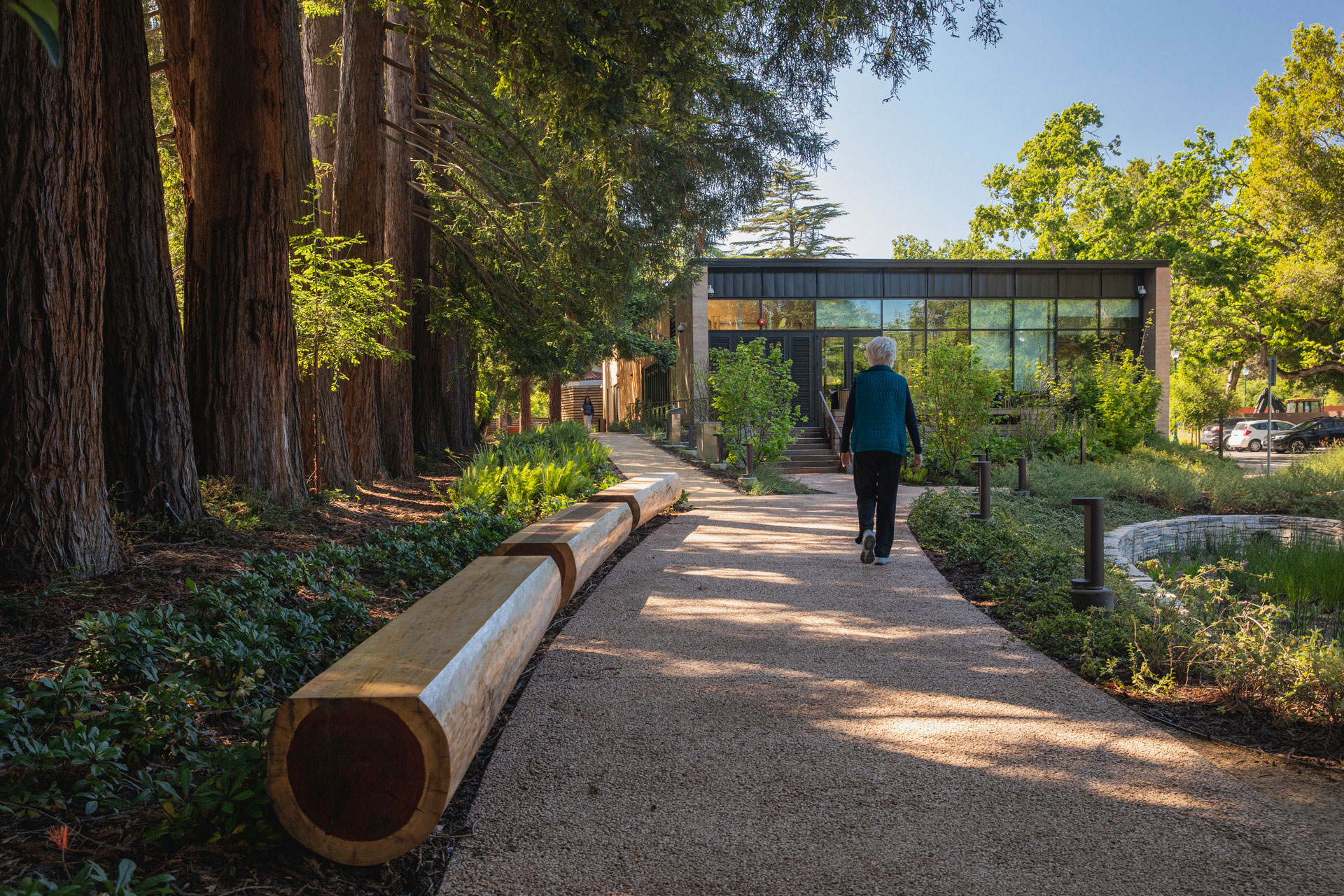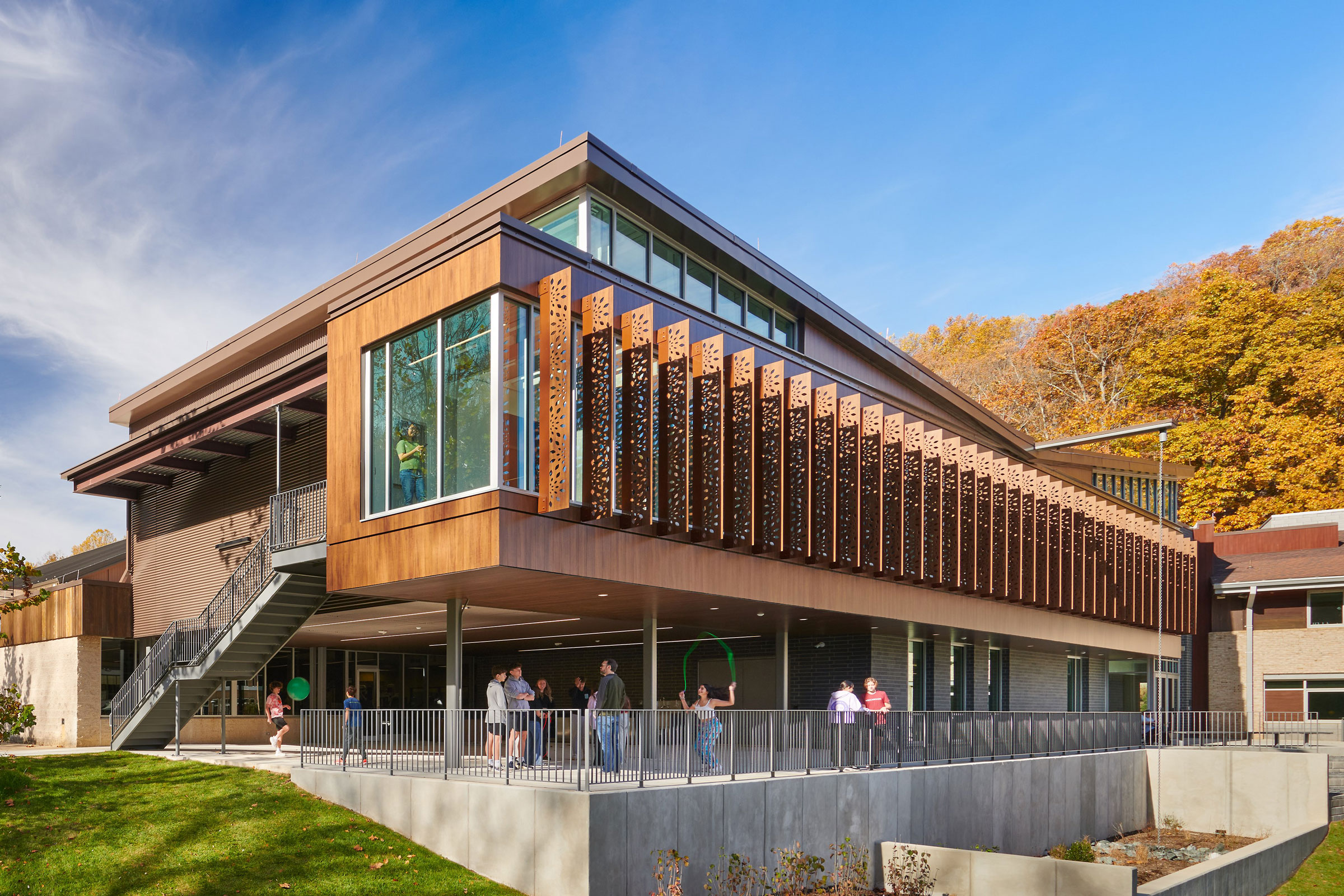Story at a glance:
- SWA offers a blueprint in its Climate Action Plan (CAP) and a call to action to others in the field.
- In December 2024 SWA released its CAP, targeting a 50% reduction in project-based emissions by 2030.
- SWA aims to create a “culture of action” across the firm’s eight studios to curb operational emissions and popularize carbon-conscious design.
Though its true origins are deeply rooted, landscape architecture as a recognized discipline is only 126 years old. For over half that time SWA—today one of the largest landscape firms in the US—has designed, planned, and built landscapes of all scales and types. Some of the trees in our projects are older than professional licensure.
Over the decades our firm has grown and adapted alongside the discipline at large, expanding into global markets, new project types, and increasing recognition of landscape architects as the AEC industry’s preeminent experts in climate adaptation. Working with a palette of living ecological systems at vast project scales, landscape architects have a front seat to the climate crisis. Many of us entered this field out of an affinity for nature. Today we’re witnessing its rapid decline as wildfires, flooding, extreme heat, and drought reshape our cities and landscapes.
These are not anomalies but defining conditions of modern life, locked in with our current warming trajectory. Climate change isn’t going anywhere, but our industry’s perceived barriers to action aren’t fixed. Even in the context of mass environmental deregulation, meaningful intervention is both possible and essential for a livable planet.
Why Landscape Architecture?
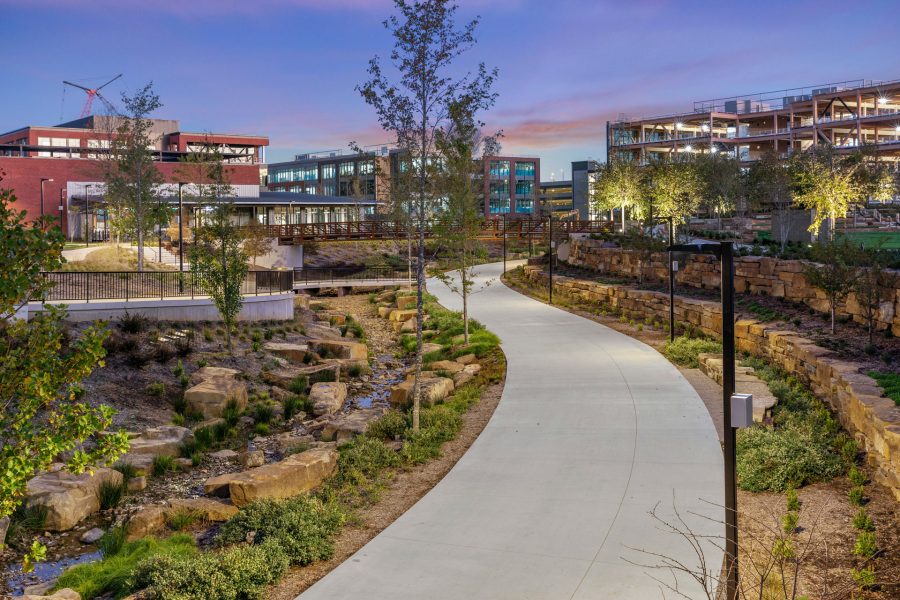
This Walmart headquarters uses local materials and emphasizes restoration at scale. Photo by David Lloyd, courtesy of SWA
In December 2024 SWA released a Climate Action Plan, or CAP, targeting a 50% reduction in project-based emissions by 2030 and aiming to create a “culture of action” across the firm’s eight studios to curb operational emissions and popularize carbon-conscious design.
Aligned with IPCC, ASLA, and other industry targets, the plan and its goals are not unique. They’re not meant to be; the point of such initiatives is cross-market alignment and momentum-building. Many large-scale AEC firms have developed similar documents and grappled with their implementation for years. Yet SWA’s CAP stands out as the first in the field of landscape architecture. Why?
While architecture and engineering firms command multi-billion-dollar global markets and frequently serve as prime consultants on large-scale developments, landscape architecture occupies a fraction of the market size, professional ranks, and revenue streams—often a single-digit percentage of a given project’s construction cost. This economic position has reinforced a broad perception of landscape architects as niche contributors rather than change agents, sidelining much of our work as “amenity spaces” rather than the foundation of a project’s cultural, ecological, and economic impact.
In economic terms it has also limited landscape firms’ capacity to invest the necessary overhead to develop and commit to CAPs in the first place. (For reference, ASLA’s 2024 Industry Report found that the typical American landscape practice had a single office, around four staff, and gross annual revenues of roughly $570,000.) Developing SWA’s CAP was, in part, an effort to provide a replicable model that firms of all sizes can tailor to their unique circumstances—both a public commitment and a how-to kit, acknowledging that each firm’s entry point to climate action may look different, even while sharing the same values.
Decarbonizing Design
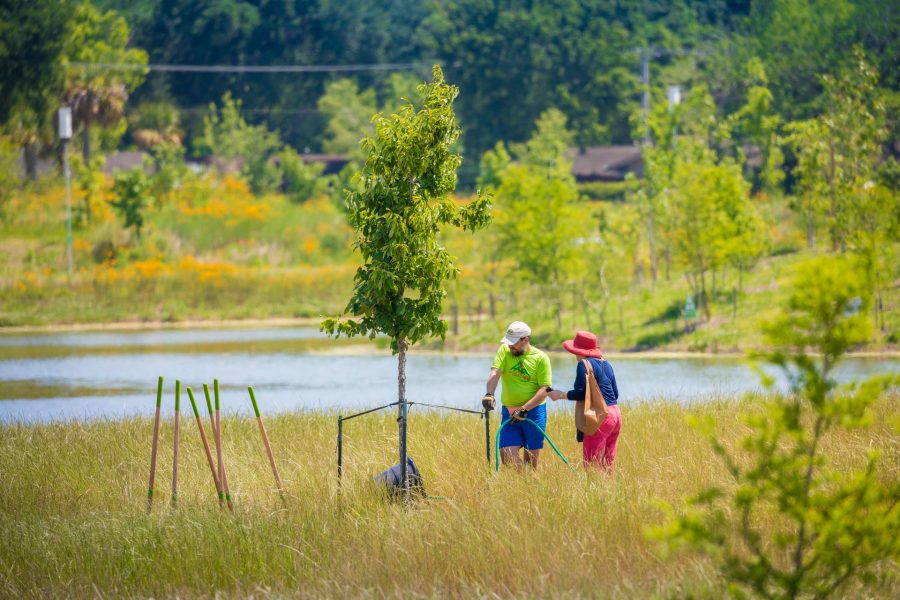
Stormwater ecological resilience work is happening in the field. Photo by Jonnu Singleton, courtesy of SWA
Because project-based emissions significantly outweigh operational emissions (architectural peers report embodied carbon emissions from a single year of design work can be 280 to more than 1,000 times greater than one year of operational emissions), a cornerstone of SWA’s CAP is a phase-by-phase guide to decarbonizing design work. Originally developed through SWA’s Patrick T. Curran Fellowship program by CAP co-lead Mariana Ricker, this is a hyper-condensed version of an in-depth document recently peer-reviewed and released by ASLA as an industry-wide resource—leveraging and building upon existing tools like Climate Positive Design’s Pathfinder Toolkit and Sasaki’s Carbon Conscious research.
Rather than simply listing best practices, the guide overlays decarbonization strategies onto each stage of a project’s life cycle, from kickoff through construction and maintenance, providing a structured framework for designers to limit embodied carbon, maximize sequestered carbon, and advocate for these changes among various stakeholders, from clients to contractors.
Another key feature is the CAP’s emphasis on project benchmarking. By measuring existing project emissions against industry baselines and peer projects, benchmarking forms the real backbone of long-term action, giving designers clear, actionable data to set reduction targets, track progress over time, and make informed choices.
Finally, broad adoption of these practices across eight studios requires sustained support at a local level; to that end SWA established a network of self-nominated “Climate Champions” embedded at all levels of the firm. This year these individuals are already beginning to lead onboarding, training, field symposiums, and ongoing knowledge-sharing efforts, embedding climate action into the daily culture of each studio.
What Now?
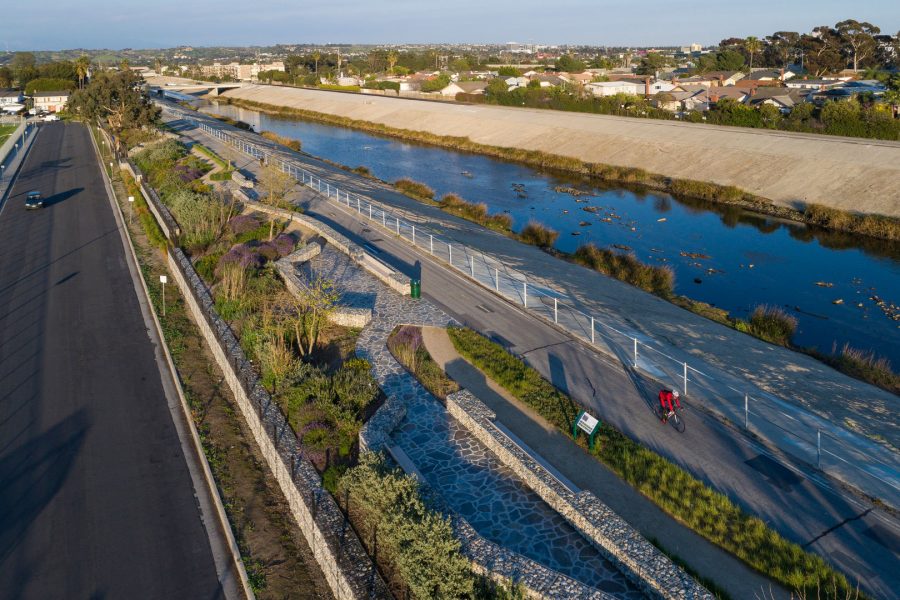
Low-carbon materials were used as part of the Milton Street project. Photo by Jonnu Singleton, courtesy of SWA
The work ahead is substantial, but the stakes are clear. Our oceans are warming, acidifying, and expanding, contributing to sea-level rise and intensifying storms. In California and Texas, where SWA has an outsized domestic presence, extreme heat and drought have drastically impacted health, quality of life, and agricultural production. Plant and animal biodiversity are plummeting. Scientific consensus tells us that in the next century, these trends will only escalate.
Since SWA’s establishment in 1957 annual global carbon emissions have increased by more than 450%. The AEC sector accounts for a staggering 40% of those emissions each year. While landscapes and open spaces contribute a proportionally smaller amount than buildings and infrastructure, landscape architects have an entirely distinct toolkit—designing projects that sequester carbon, mitigate heat islands, support biodiversity, buffer sea-level rise and flooding, and center climate justice.
SWA’s Climate Action Plan hopes to make these contributions systematic rather than incidental, providing structure to what (in our industry, at least) has often been an ad hoc effort. Real progress, of course, requires action beyond an individual firm. This can be a challenging mandate in a profession that is still establishing its influence within a massive global industry, but the benefits of acting now—with rigor, data, consistency, and real collaboration—vastly outweigh all other options. To our fellow peers, colleagues, and practitioners: We invite you to join us.

